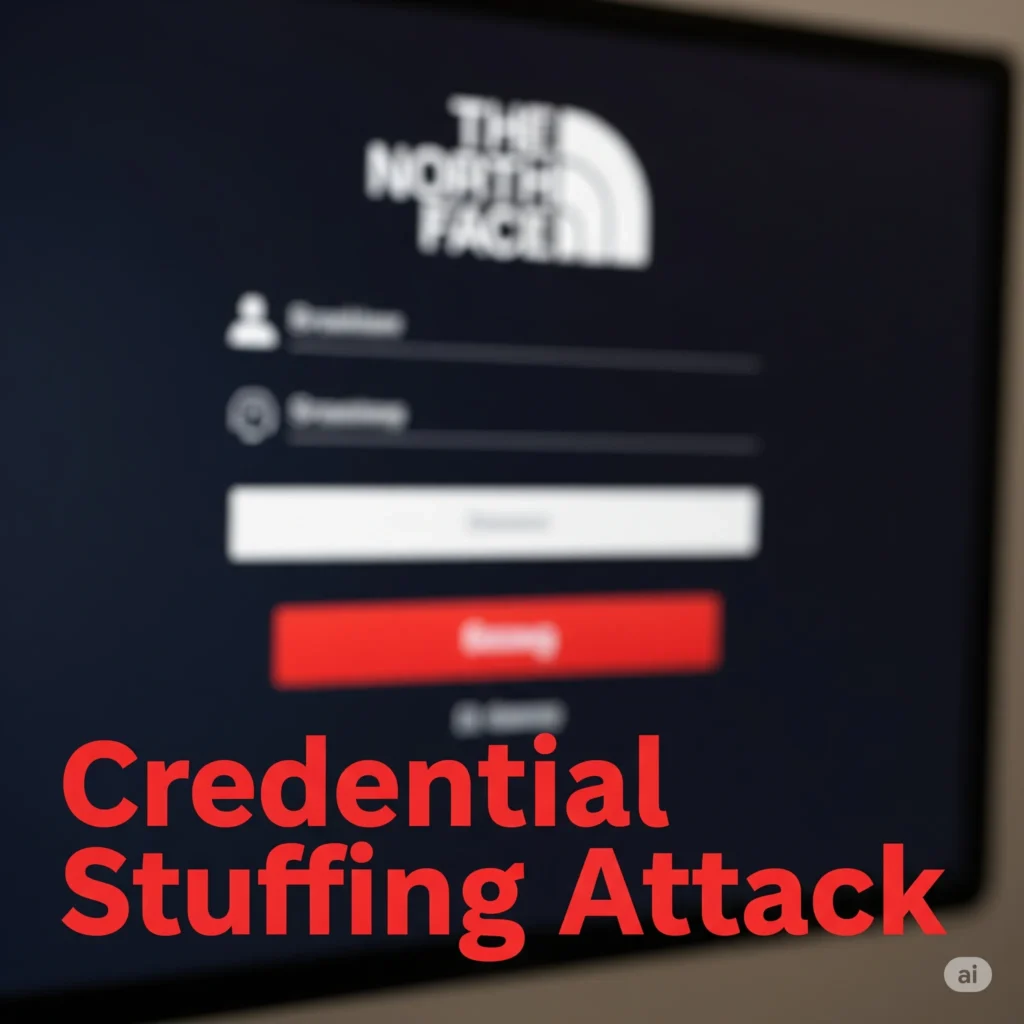Overview
In a concerning development for privacy-conscious shoppers, The North Face has confirmed a credential stuffing attack that resulted in unauthorized access to customer account data. The outdoor apparel brand reported that threat actors used stolen login credentials from previous data breaches to gain access to over 195,000 customer accounts on its official website. While no financial information was leaked, sensitive personal details were accessed—raising serious concerns about consumer data protection.
Key Facts
- Attack Type: Credential Stuffing Attack
- Affected Brand: The North Face (owned by VF Corporation)
- Customer Accounts Accessed: ~195,000
- Data Compromised: Names, purchase history, addresses, phone numbers, email addresses, account creation dates, XPLR Pass reward records
- No Payment Card Details Compromised
- Attack Period: June 26 to August 8, 2025
- Notification Issued: June 16, 2025
- Immediate Action Taken: Password resets, multi-factor authentication (MFA) enforcement, third-party forensic investigation launched
What’s Verified and What’s Still Unclear
✅ Verified
- Credential stuffing method was used
- Attackers used credentials from previous breaches
- No evidence of malicious changes to accounts or fraudulent purchases
- Customers are being directly notified
❓ Still Unclear
- Who exactly is behind the attack
- Whether attackers attempted to resell the accessed data
- If similar attacks are ongoing across VF Corporation brands
Timeline of Events
- June 26, 2025: Attackers began exploiting login credentials
- August 8, 2025: Unusual account activity flagged internally
- August 10, 2025: Security team confirmed credential stuffing attack
- August 11–20, 2025: Investigation underway with a third-party cybersecurity firm
- August 22, 2025: VF Corporation reset all passwords and enforced MFA
- September 1, 2025: Customers notified of breach and advised to monitor account activity
Who’s Behind It?
As of now, no specific threat actor group has been linked to the attack. However, the tactic of credential stuffing is commonly used by both financially motivated cybercriminals and nation-state actors due to its low cost and high return. The attackers leveraged credentials from past breaches likely sold or shared on the dark web, highlighting the dangerous ripple effect of password reuse.
Public & Industry Response
Security researchers and industry experts have called out the growing threat of automated credential stuffing attacks, particularly targeting e-commerce and retail platforms. Privacy advocates are urging organizations to adopt Zero Trust principles, including behavioral biometrics and adaptive authentication, to mitigate such attacks.
Customers expressed outrage and concern on social media, demanding tighter controls and better account monitoring tools. Some cybersecurity firms have pointed to this attack as another wake-up call for businesses still lacking bot protection and password hygiene policies.
What Makes This Attack Unique?
While credential stuffing attacks are unfortunately common, what makes this breach significant is:
- Scale: Nearly 200,000 accounts accessed
- Duration: Attack persisted undetected for over 6 weeks
- Brand Impact: A trusted retail brand now associated with poor digital hygiene
- Increased Sophistication: Attackers carefully avoided detection mechanisms using advanced bots and human-like interaction behavior
This attack underlines how even large enterprises can fall victim if robust rate limiting, login anomaly detection, and user behavior analytics are not in place.
Understanding the Basics
What Is a Credential Stuffing Attack?
A Credential Stuffing Attack is a type of cyberattack where automated tools are used to try large volumes of stolen username/password combinations across multiple websites. Since many users reuse the same credentials across sites, attackers often gain unauthorized access to accounts—even when the target site wasn’t originally breached.
Why it matters:
- Low-tech, high-impact
- Difficult to detect without proper controls
- Leads to account takeover (ATO), loyalty point theft, or identity fraud
- Affects both users and businesses with costly remediation
What Happens Next?
The North Face is taking steps to reduce further damage:
- Ongoing monitoring of affected accounts
- Enhanced bot detection and login rate-limiting
- Customer communication and awareness campaigns
- Possible legal ramifications under U.S. and global data protection laws
Affected users are advised to:
- Reset passwords (using unique combinations)
- Enable MFA across all services
- Monitor account activity and watch for phishing attempts
- Consider password managers to prevent reuse
Summary
The recent credential stuffing attack on The North Face is a stark reminder of the cyber risks tied to password reuse and weak authentication practices. With nearly 200,000 customer accounts compromised, the breach illustrates the need for both businesses and consumers to strengthen digital defenses.
As cybercriminals get smarter and more automated, relying solely on passwords is no longer enough. This breach should be a wake-up call for every organization to adopt modern authentication and monitoring techniques—before their name makes headlines for the wrong reasons.
